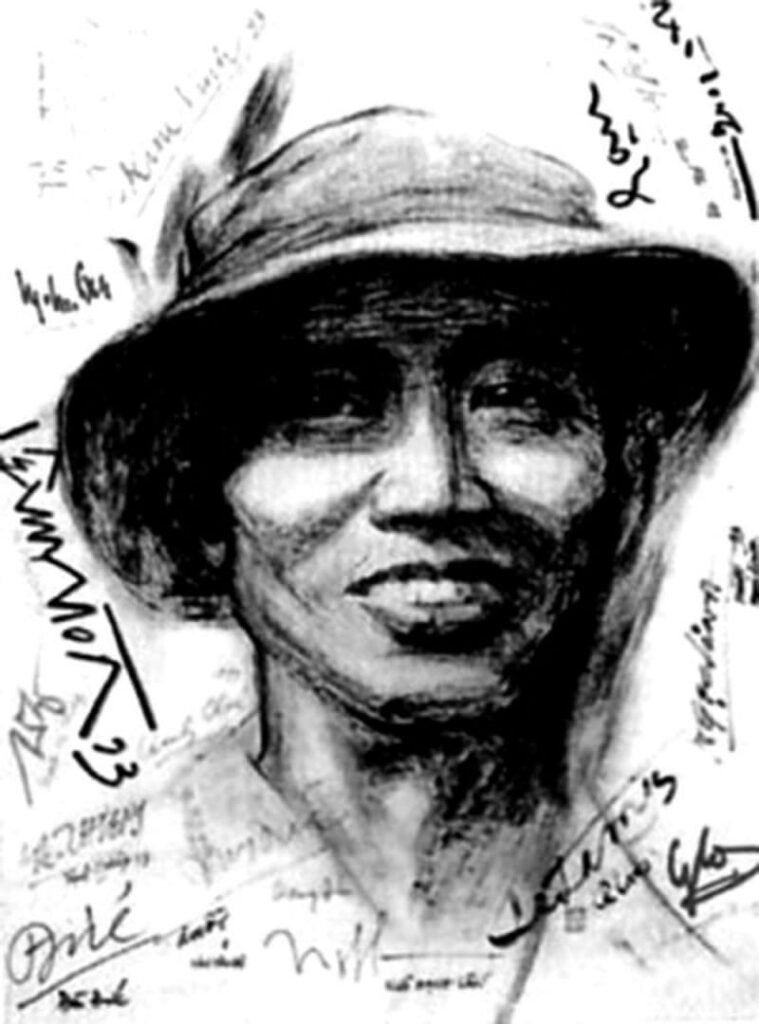Tô Ngọc Vân: A Leading Figure in Modern Vietnamese Art
Tô Ngọc Vân is one of the most prominent names in modern Vietnamese fine arts, with a life marked by challenges yet brimming with creativity. Born in the early 20th century, he pioneered the fusion of Western artistic techniques with Vietnam’s cultural identity, leaving behind a legacy of Vietnamese paintings that continue to captivate generations. This article takes you on a journey through Tô Ngọc Vân’s biography, career, and notable artworks, offering deeper insight into this iconic Vietnamese artist.
Who is Tô Ngọc Vân? A Biography of Resilience and Brilliance
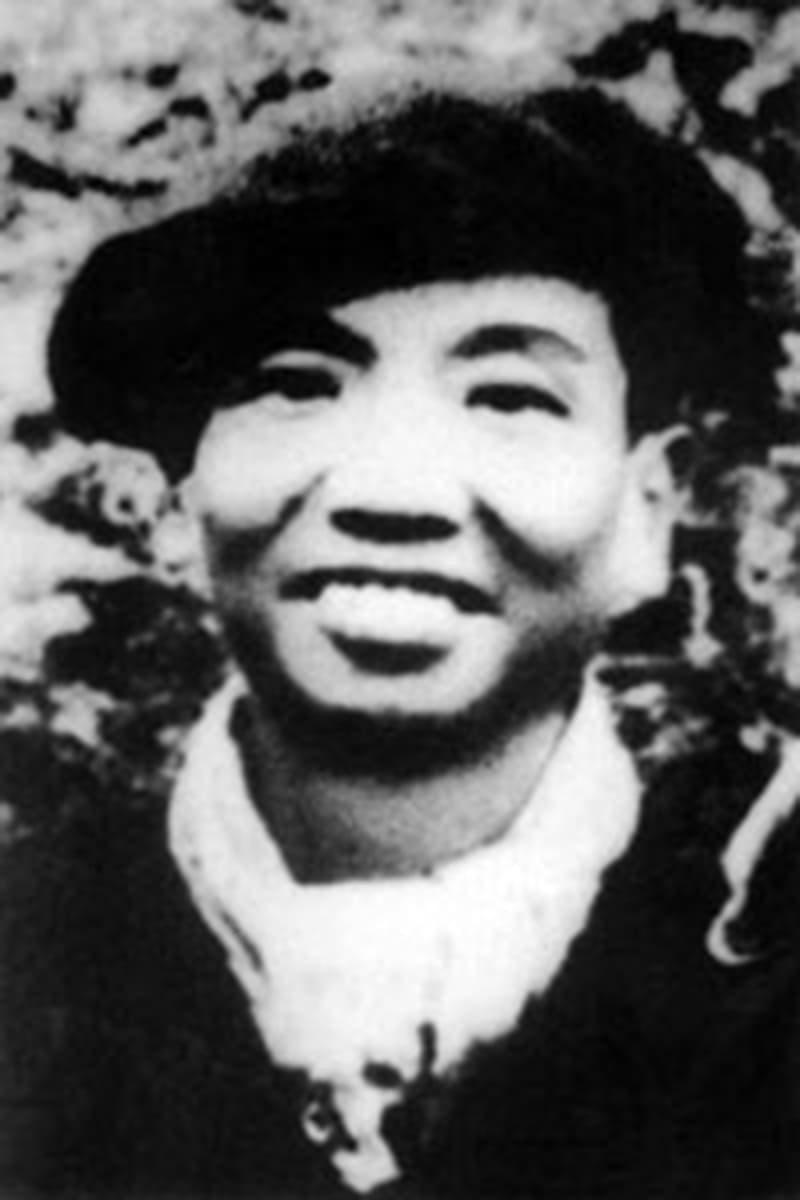
Who is Tô Ngọc Vân? This question often arises among art enthusiasts admiring his soulful Vietnamese paintings. Born on December 15, 1906, in Hàng Quạt Street, Hanoi, Tô Ngọc Vân grew up in a modest urban petit-bourgeois family. His father, Tô Văn Phú, and mother, Nguyễn Thị Nhớn, came from a scholarly yet impoverished background, engaging in small-scale trade. Facing hardship from a young age, Tô Ngọc Vân lived as an adopted child with his grandmother and aunt, seeing his parents only a few times a year due to their financial struggles.
Despite these challenges, Tô Ngọc Vân’s passion for art remained undeterred. He studied until his third year at Bưởi Secondary School (now part of Hanoi’s education system) before leaving to pursue painting. After a brief preparatory course, he passed the entrance exam for the École Supérieure des Beaux-Arts de l’Indochine (Indochina School of Fine Arts) for the 1926–1931 course, graduating with the highest marks in his class. This milestone marked the beginning of Tô Ngọc Vân’s journey as a celebrated artist.
In his personal life, Tô Ngọc Vân married Nguyễn Thị Hoàn in 1932, raising five children. Despite his demanding artistic career, his love for family shone through in his paintings, which often depicted the beauty of women and everyday life. Tragically, Tô Ngọc Vân sacrificed his life in 1954 while sketching at the Điện Biên Phủ front, cementing his legacy as a national hero.
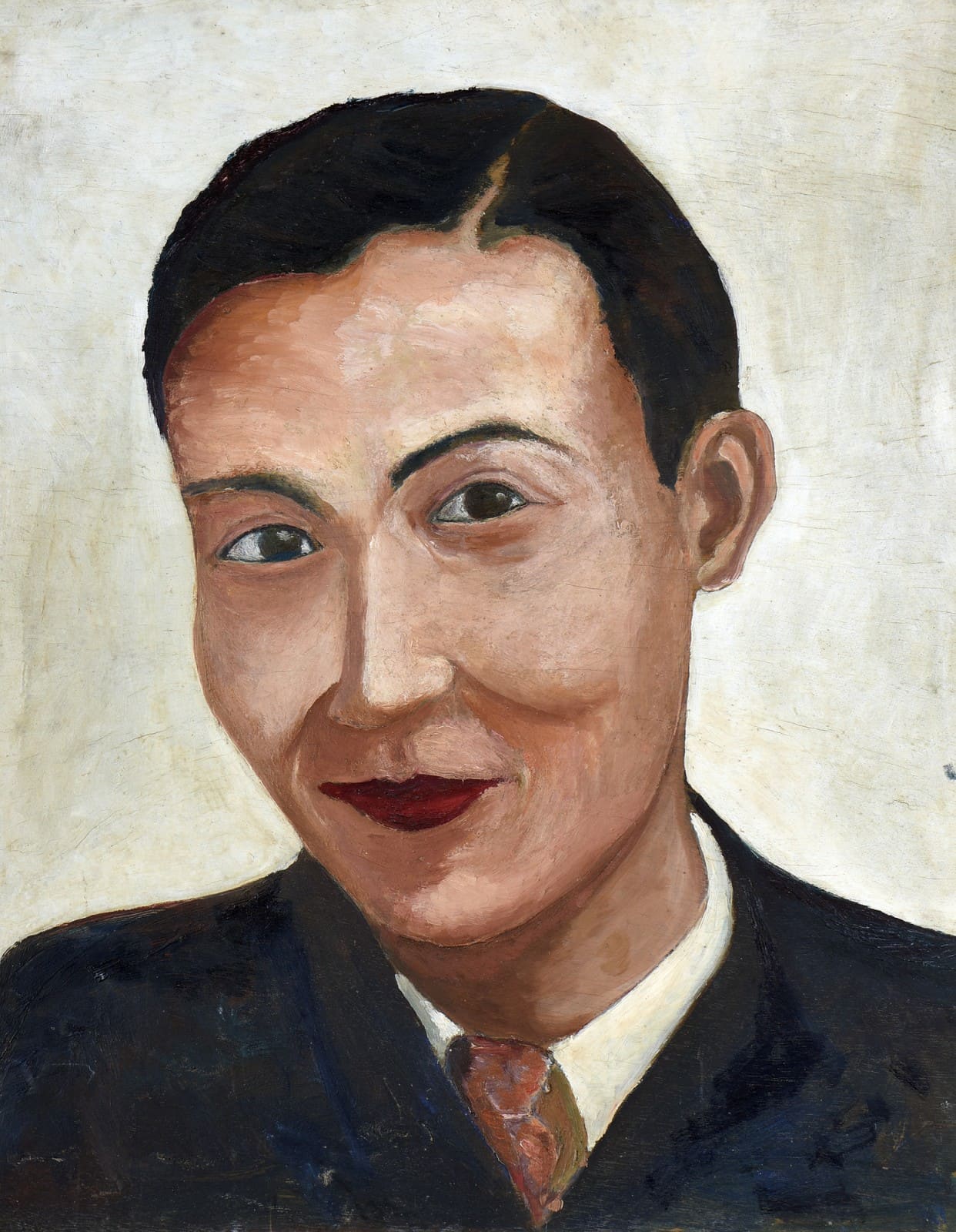
Tô Ngọc Vân’s Career: From Struggles to Triumph
Tô Ngọc Vân’s career was marked by significant challenges and remarkable achievements. After graduating, he struggled to make a living as an artist, working for newspapers like Nhân Loại, Phong Hóa, Ngày Nay, and Thanh Nghị, writing under pseudonyms such as Ái Mỹ, Tô Văn Xuân, and Tô Tử. These early years honed his diverse skills, from personal paintings to journalistic illustrations.
Early Struggles and International Breakthrough
A pivotal moment in Tô Ngọc Vân’s career came in 1931 when he won a silver medal at the Exposition Coloniale in Paris for his oil painting Lá Thư. In 1932, he received an honorary award at a French artists’ exhibition. These accolades brought recognition, enabling him to sustain himself as an artist by the early 1930s. In 1933, he joined the French Artists’ Association and was invited by King Bảo Đại to paint in Huế.
Tô Ngọc Vân often carried his easel to rural areas near Hanoi, capturing the beauty of nature and people. From 1935 to 1938, he taught at Sisowath School in Cambodia, creating artworks in Phnom Penh. In 1938–1939, he returned to teach at his alma mater, Bưởi Secondary School. By 1939, he became a professor at the Indochina School of Fine Arts, solidifying his stature in the art world.
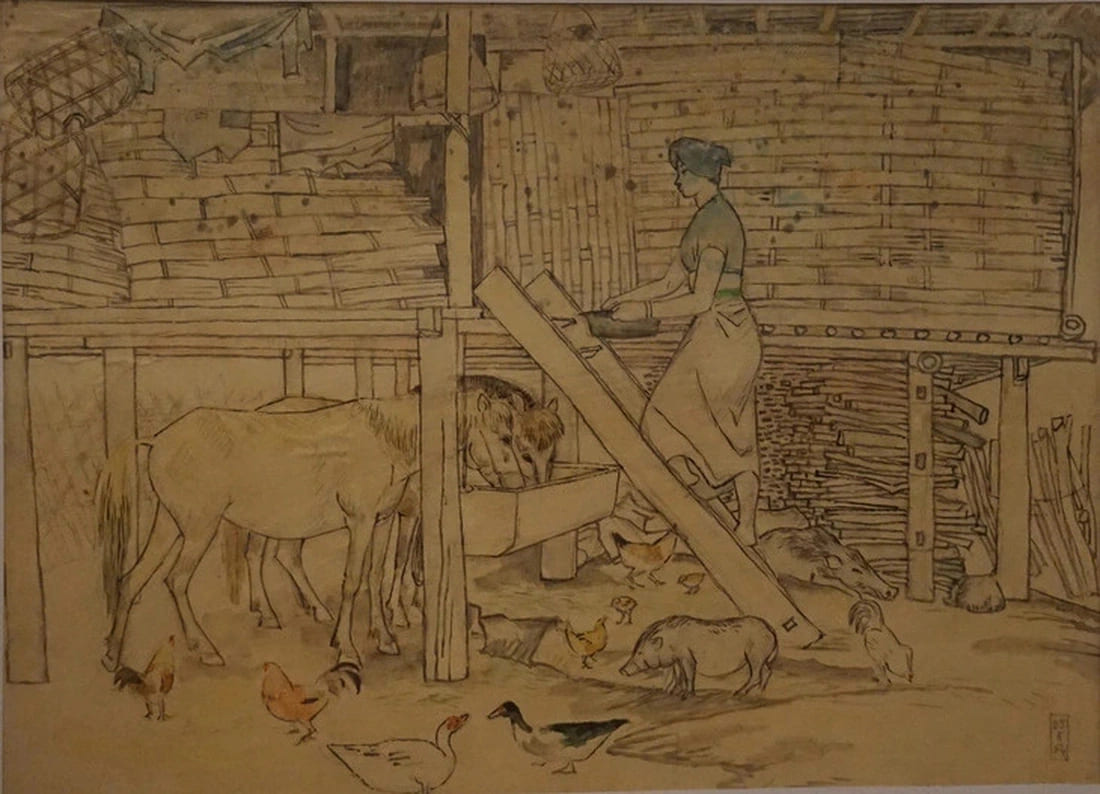
Role in the Resistance and Contributions to the Revolution
After the 1945 August Revolution, Tô Ngọc Vân’s career took a revolutionary turn. He created propaganda posters, portraits of Hồ Chí Minh, and was appointed Director of the newly established Vietnam College of Fine Arts. In 1946, he joined the Việt Bắc Propaganda Team, painting slogans and contributing to theater. By 1947, he led the arts division of Military Zone 10.
In 1948, Tô Ngọc Vân headed a resistance cultural troupe in An Giang, establishing a lacquer workshop and writing for literary and arts publications. He engaged in heated debates at the National Literature and Arts Congress, advocating for independent artistic perspectives. In 1949–1950, he painted military activities and was appointed Director of the Central College of Fine Arts in Phú Thọ.
In his final years, Tô Ngọc Vân participated in the 1950 Border Campaign, creating more Hồ Chí Minh portraits and exploring themes inspired by French Impressionists. In 1953, he lived in Ninh Dân village, Phú Thọ, painting about farmers’ struggles. In 1954, while sketching at Điện Biên Phủ, he was killed on June 17 at Lũng Lô Pass. His sacrifice made him a heroic figure, and his works won awards at the 1954 National Fine Arts Exhibition.
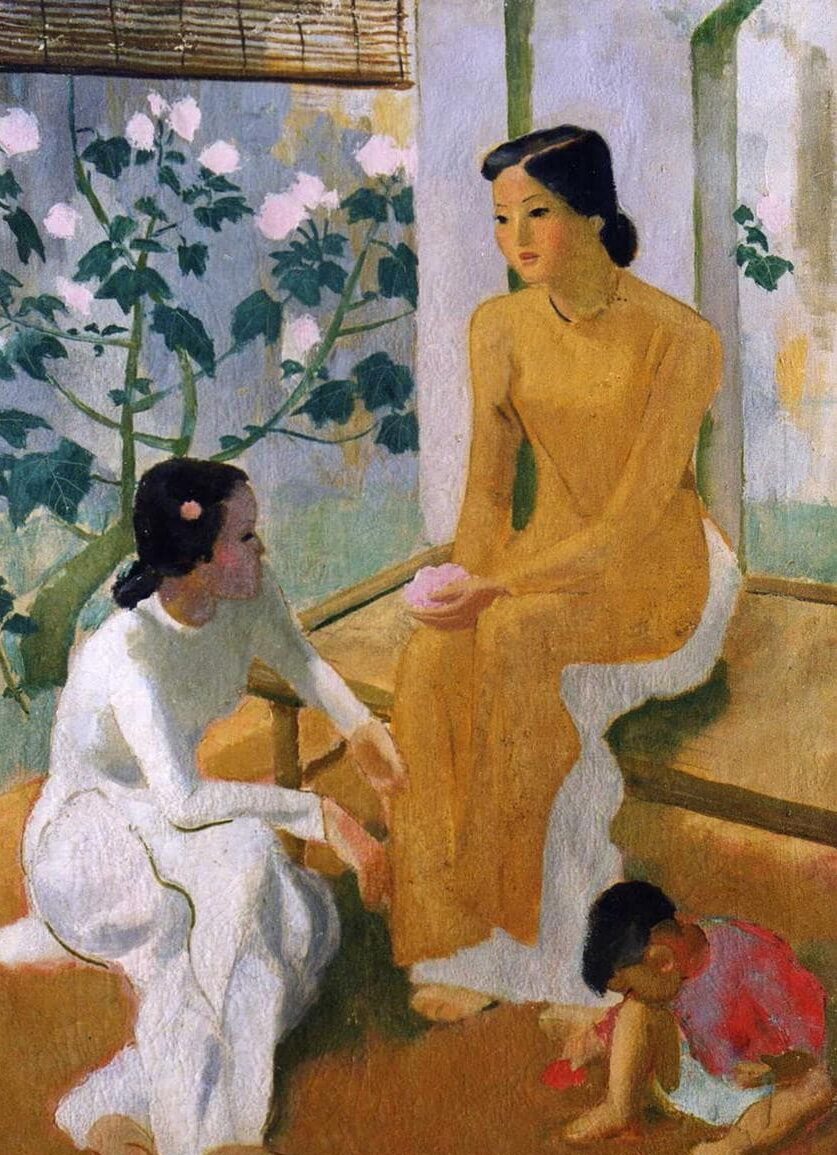
Notable Exhibitions and Awards
Tô Ngọc Vân’s career was celebrated through numerous international exhibitions:
- 1931: Exposition Coloniale, Paris (Silver Medal).
- 1932: French Artists’ Association Exhibition (Honorary Award).
- 1954: National Fine Arts Exhibition (Awards for Điện Biên Phủ sketches).
- 1996: Paris – Hanoi – Saigon: L’aventure de l’art moderne au Viêt Nam, Paris.
- 2006: Il drago e la Farfalla, Rome.
- 2013: Du Fleuve Rouge au Mékong, Paris.
His legacy was further honored with streets named after him in Ho Chi Minh City (1985) and Hanoi (1995).
Tô Ngọc Vân’s Artworks: Inspired by Women and Resistance
Tô Ngọc Vân’s paintings draw inspiration from women and everyday life, divided into two distinct periods: pre- and post-1945. His works are not only artistic masterpieces but also symbols of modern Vietnamese fine arts, blending oil, lacquer, and sketches.
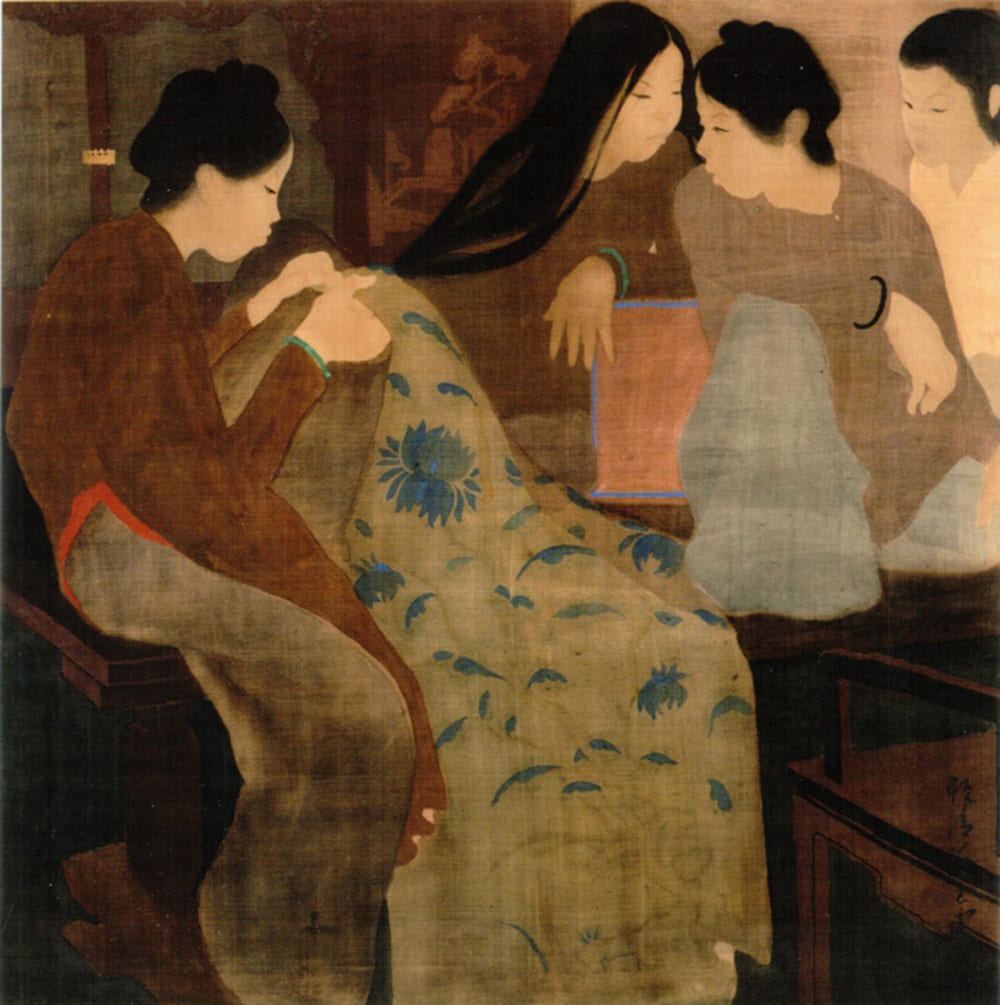
Pre-1945 Works: Romantic Depictions of Vietnamese Women
Before 1945, Tô Ngọc Vân’s paintings focused on women, blending romanticism and realism. Notable works include:
- Thiếu Nữ Bên Hoa Huệ (1943): This iconic painting captures the pure beauty of a Vietnamese woman, with lilies symbolizing innocence, showcasing Tô Ngọc Vân’s mastery of light and color.
- Hai Thiếu Nữ và Em Bé (1944): A masterpiece depicting family bonds, recognized as a National Treasure, reflecting Tô Ngọc Vân’s love for family.
- Thiếu Nữ Bên Hoa Sen (1944): Highlights rustic beauty, infused with Vietnamese cultural elements.
- Thiếu Phụ Ngồi Bên Tranh Tam Đa (1942): Portrays a woman in a traditional setting.
- Buổi Trưa (1936) and Bên Hoa (1942): Everyday life scenes painted in oil, evoking emotional depth.
These works, over 100 of which were exhibited internationally, established Tô Ngọc Vân’s reputation as a leading artist.
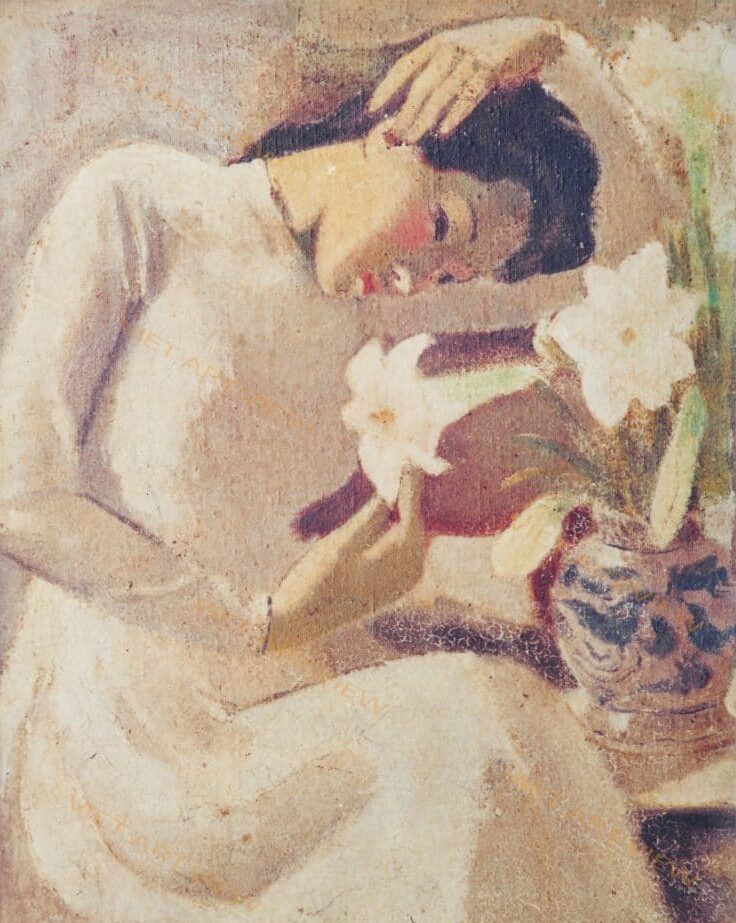
Post-1945 Works: From Resistance to National Legacy
After 1945, Tô Ngọc Vân’s works shifted to revolutionary and resistance themes, using diverse mediums like lacquer and watercolor:
- Hồ Chủ Tịch Làm Việc tại Bắc Bộ Phủ (1946): His first portrait of Hồ Chí Minh, expressing reverence for the leader.
- Nghỉ Đêm Bên Đồi (1948) and Nghỉ Chân Bên Đồi (1948): Sketches capturing soldiers’ lives during the resistance.
- Hai Chiến Sĩ (1949): Depicts military-civilian unity.
- Con Trâu Quả Thực (1954): One of his final works, portraying rural Vietnam.
These paintings are not only artistic but also historically significant, contributing to modern Vietnamese fine arts.
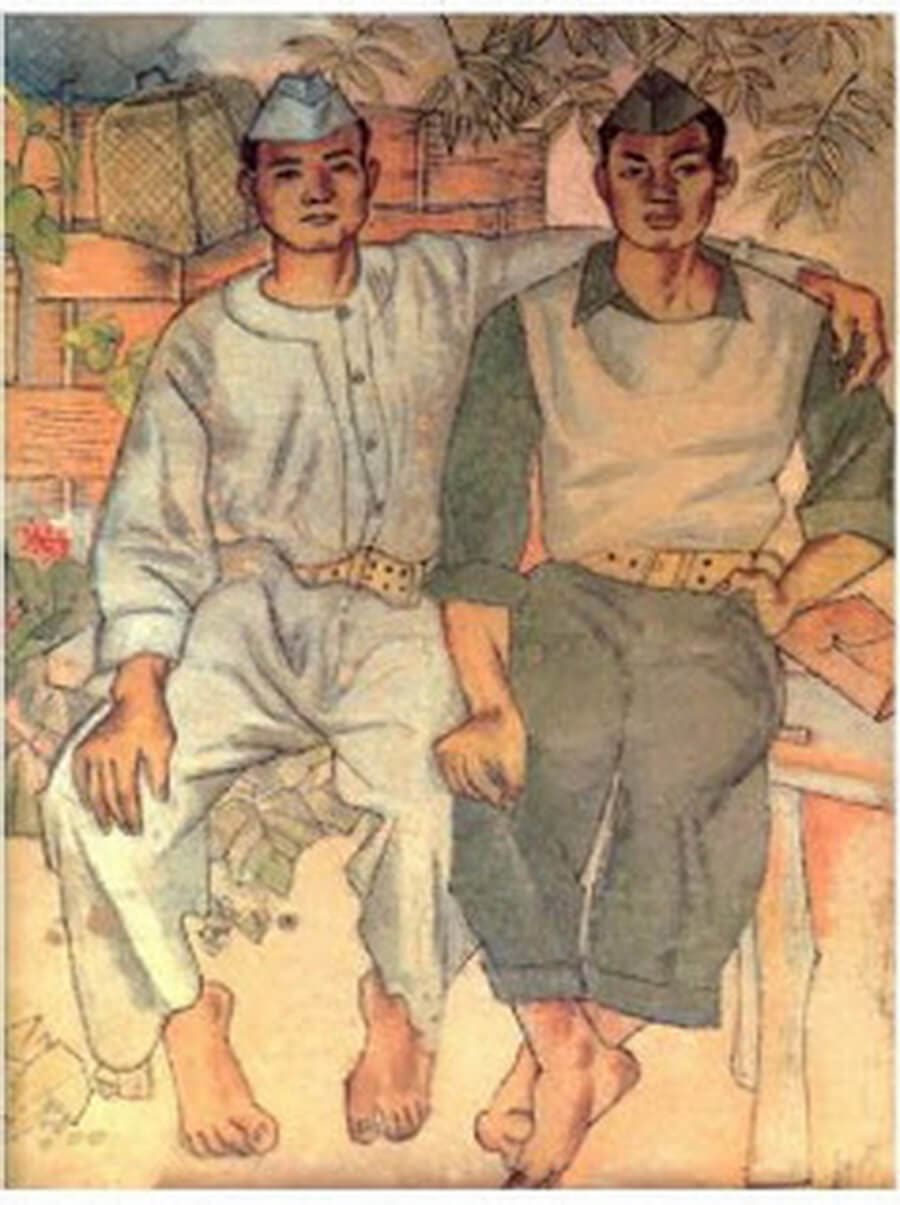
Legacy and Impact of Tô Ngọc Vân on Vietnamese Art
Tô Ngọc Vân’s legacy transcends time, influencing generations of artists. He paved the way for modern Vietnamese painting by blending Western aesthetics with national spirit. His students at the Vietnam College of Fine Arts carried forward his vision, shaping modern Vietnamese art.
His sacrifice at Điện Biên Phủ made him a national hero, commemorated through exhibitions and streets named in his honor. Today, Tô Ngọc Vân’s paintings remain sought-after and studied, reflecting his enduring vitality.
In conclusion, through Tô Ngọc Vân’s biography, career, and artworks, we see a great artist who devoted his life to art and nation. If you’re passionate about modern Vietnamese fine arts, explore Tô Ngọc Vân’s works to connect deeply with Vietnam’s artistic heritage.

